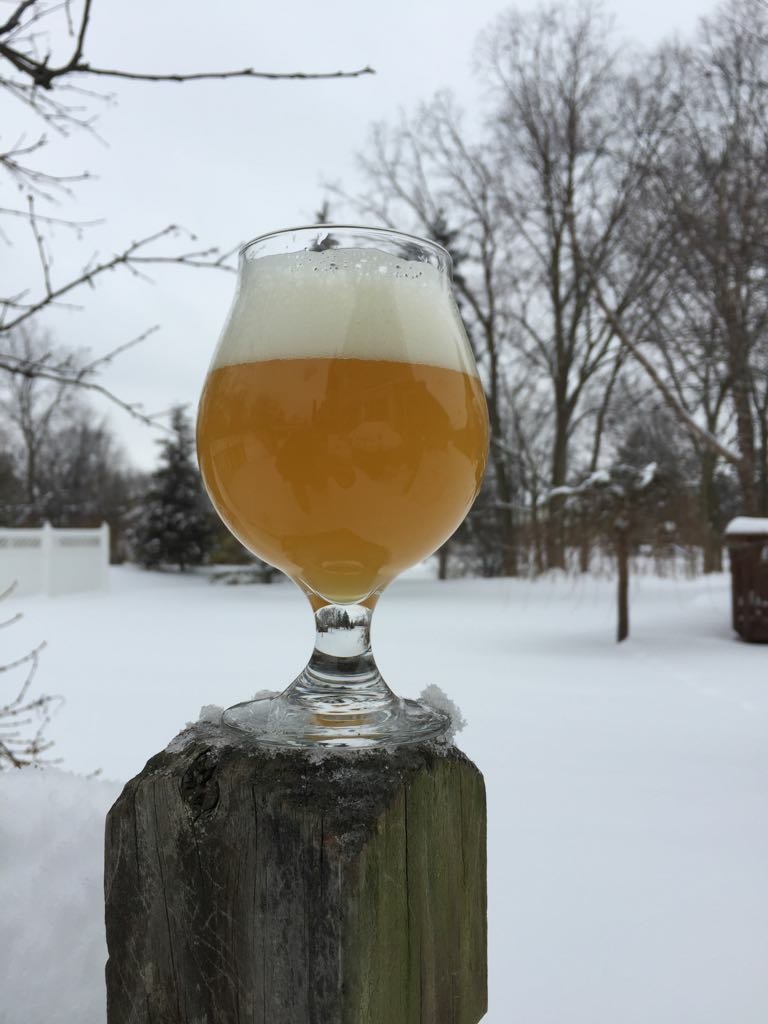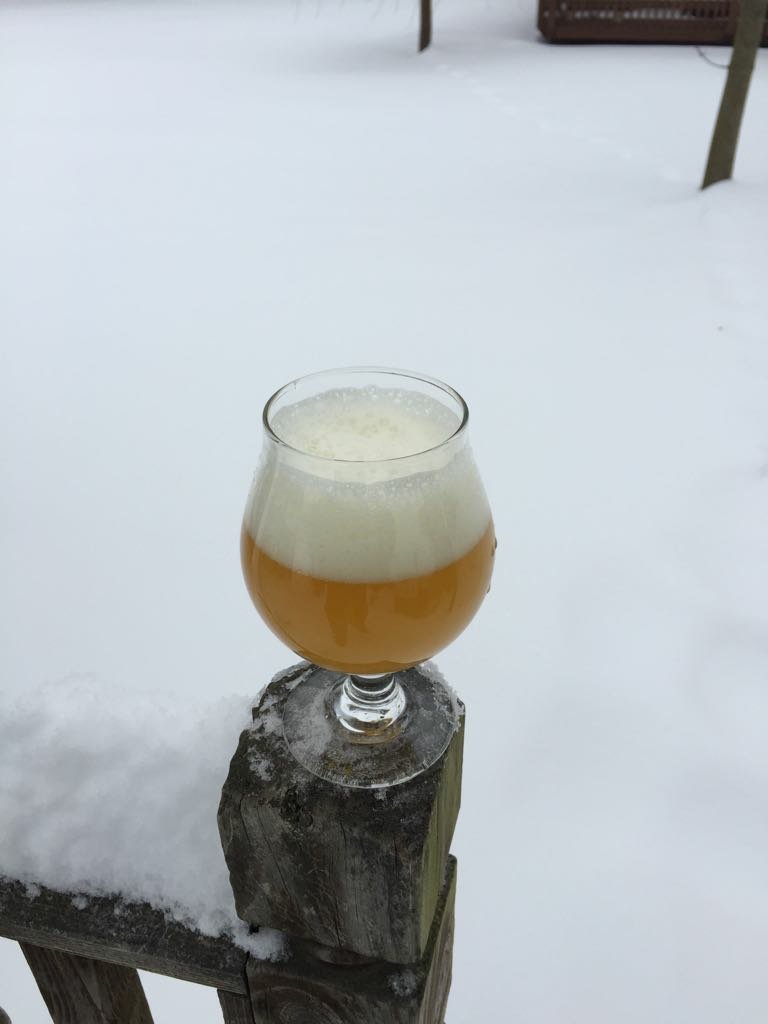Alright, I've been drinking the blended batch for a couple of days now, here's my full report.
Overall I think it's decent, although it's not the 90%-there knockout i was hoping it would be. It's fairly sweet, which is a little surprising, although I have a theory on that. However, the big thing I'm happy with is that it has the subtle banana-bubblegum thing that TH seems to have. I don't have any TH for a side by side right now, but from what I remember of Doppelganger the character is close. Big tropical fruit character as well. There are no phenolics of any kind. No clove at all, which is great. But none of that almost-pepper spice that TH has, so maybe I need to bump up the T-58? At any rate, I plan on continuing to experiment with the blending since I'm happy with the ester character this turned out. The color is paler than Doppelganger, although I think that's not super apparent from the pics because of the lighting.
Here is the recipe/process:
Small batch:
~3.5 quarts into primary.
O.G. 1.092, "F"G 1.035 (underattenuated due to temp control failure)
Ca 78 ppm, SO4 97 ppm, Cl 196 ppm, K 144 ppm, HCO3 12 ppm (filtered tapwater cut with distilled, then additions of KCl, gypsum, CaCl2)
93% Weyermann Pils
2.9% C10
3.9% Acidulated malt
Single infusion mash at 147F
Mash pH 4.94 (what can I say, I don't do 1 gal batches enough to have it dialed in)
2 oz Citra at flameout, 10 min hop stand
0.35 g WB-06, sprinkled dry into intentionally under-aerated wort, pitched at 77F, fermented at 78F ambient until Murphy's law cooled it quickly to 60F ish, hence the underattenuation.
No dry hops
I think the WB-06 underattenuating is the reason for the sweetness, since it is the big attenuator of the three strains. My theory is that it never reactivated, even after packaging.
Large batch:
5.5 gal into primary
O.G. 1.075, F.G. 1.017
Ca 75 ppm, SO4 101 ppm, Cl 201 ppm, K 161 ppm, HCO3 12 ppm (filtered tapwater cut with distilled, then additions of KCl, gypsum, CaCl2)
72.4% Weyermann Pils
20.7% Carafoam
3.5% C10
3.5% Acidulated malt
Intensified double decoction, sacch. rest at 157F, mashout at 177F
Mash pH 5.37
Sparge water pH 5.21
1 oz Mosaic at 5 min
6 oz Citra, 2 oz Amarillo, 1 oz Mosaic at flameout for a 15 min hop stand.
14 g S-04, 2.5 g T-58, rehydrated, pitched at 59F, fermented at 61F and ramped to 67F at 72 hours.
DH1: 2 oz each Mosaic, Citra, Amarillo at ~36 hours, loose in fermenter
DH2: 4 oz Citra, 2 oz Mosaic at ~72 hours, loose in fermenter
Keg hop: 4 oz Citra, 2 oz Mosaic again, loose in keg with dip tube filter.
Packaging: kegged with 2g CBC-1, keg hops and 12 oz gyle essentially canned on brew day from large batch. CO2 transferred both batches to keg. For the small batch, I used the method I described in post #1661. Conditioned at room temp for 12 days.
View attachment 557723View attachment 557724


















![Craft A Brew - Safale S-04 Dry Yeast - Fermentis - English Ale Dry Yeast - For English and American Ales and Hard Apple Ciders - Ingredients for Home Brewing - Beer Making Supplies - [1 Pack]](https://m.media-amazon.com/images/I/41fVGNh6JfL._SL500_.jpg)











































